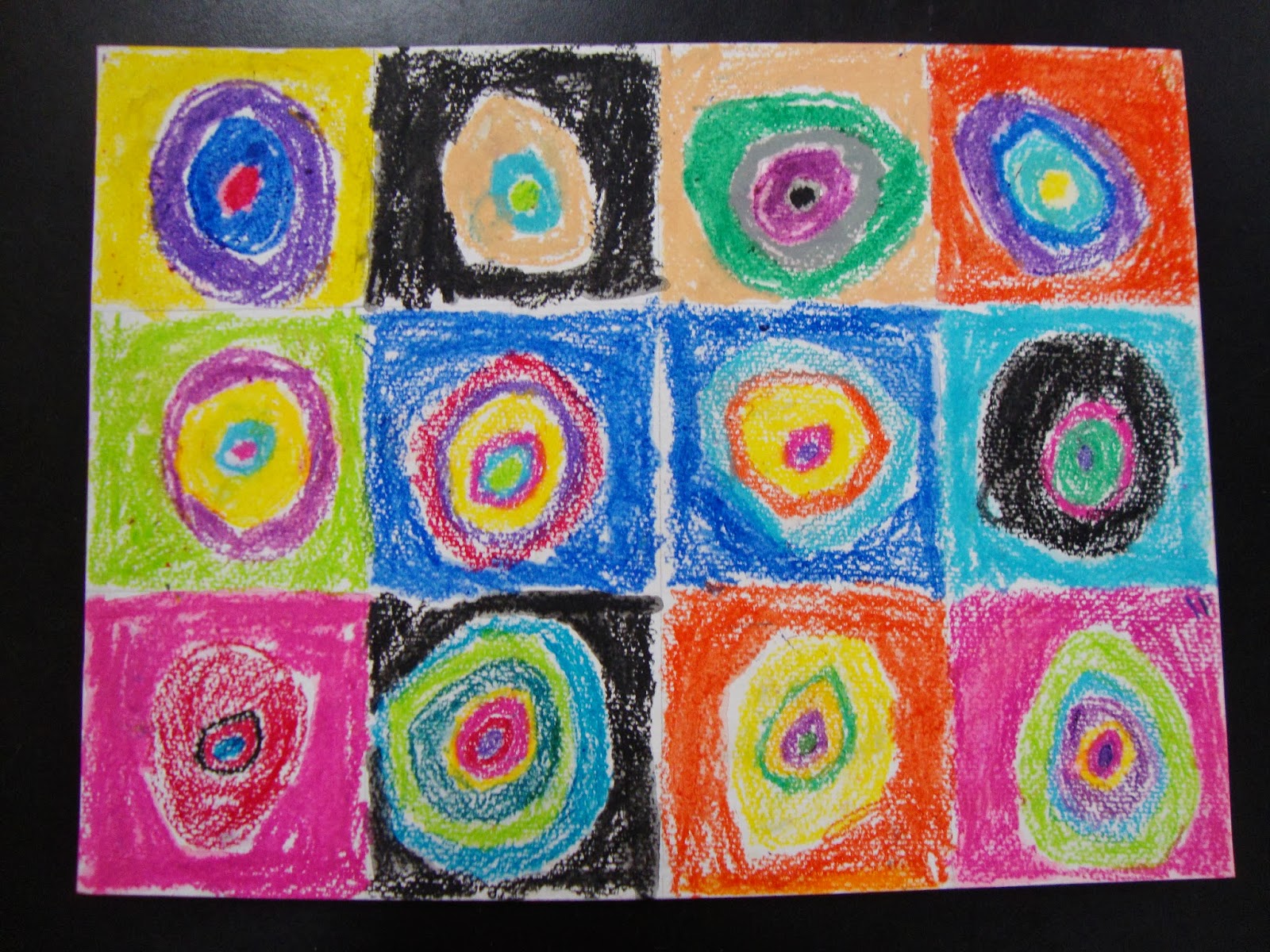Student’s began this project by analyzing samples of Jackson Pollock’s
work. They identified the lines in the
painting based on a previous line study they had completed the week
before. Students then learned that
Pollock painted his line drawings by throwing paint on large canvases on the
ground. In order to create similar style
artwork, kindergarteners were given a plastic tray with different four
different colors of paint. Each cup of
paint had a marble placed in it.
Students put their paper in the tray, used a spoon to place the paint-covered
marbles in the tray, and then rocked the tray side to side. This motion guided the marbles across their
canvases, each one creating a unique design.
Friday, February 21, 2014
Kindergarten: Primary Colors Mondrian Collage
Kindergarteners began this project by
looking at some of Mondrian’s paintings. They looked in depth at Broadway Boogie
Woogie and discussed how abstract art can make a viewer think of different
things. They created the collage by cutting out different sized squares and
rectangles from colored construction paper and layered them on top of each
other. They finished by dipping craft sticks in black paint and adding black
lines on top.
Grade Four: Mixed Media Winter Birch Tree Landscapes
Fourth Graders began their exploration of Birch Trees with a discussion about the natural beauty of things that we find in nature. We decided that things like, waterfalls, animals, fields and sunsets were things that were naturally beautiful. Then, we began our quest to capture the natural beauty of these objects in our artwork, like many famous artists have done before us! We began with a resist out of tag board to cover the bottom on our snowy landscapes. Then, the students used oil pastels to blend their skies, using warm and cool colors, adding suns, moons and fences to make it their own. The trees were done on a separate piece of paper using a “dry” brush technique with cardboard and black paint. When the trees dried they were attached to our background. At this point our fourth graders had a discussion on light sources and shadows, they were then in charge of determining where the light source was in their picture, and where the shadows would be. Finally, the students used a flicking technique to add falling snow to their pieces. The students learned a lot, and put a lot of work into these pieces, but they were so pleased with the end result!
Grade 3: Chinese Dragons
Third grade began this project by
looking at ancient Chinese dragon depictions (paintings, prints, clothing
etc.). They discussed the difference between western and eastern understandings
of dragons and learned about myths. We then did a guided drawing in our sketchbooks to practice our skills. Once third graders were satisfied with their drawings, they transferred them onto larger paper. Using thin and thick sharpies students inked in their details. Finally, The painting began. Students mixed colors in a plastic palette to personalize each dragon, we then added hints of sparkle with glitter
watercolor.
Grade 5: Linear Perspective Cityscapes
The fifth graders learned all about
drawing in one point perspective. They had an introduction to the concept in
their first class when they drew their names in one point perspective block
letters. They transferred the skills they learned from this small project to a
bigger area and began designing their own cityscape. After drawing one side of
the street with buildings, the students had the freedom to draw whatever they
wanted on the other side. They finished the drawing by painting with
watercolors.
Grade 1: Kandinsky Circle Study
Students began this project by looking at Wassily Kandinsky’s Color Study of Circles in Squares. They discussed the colors and shapes that
they found in the painting. They then
learned how to create concentric circles, or circles that go around each
other. The students were then given a
paper divided into 12 squares and water souable oil pastels.
First and second graders dipped their pastels into water, then began making circles inside the squares. It was our attempt to replicate the same study that Kandinsky did.
Wassily
Kandinsky, Color
Study, Squares with Concentric Circles
First and Second Grade Color Studies:
Subscribe to:
Posts (Atom)























